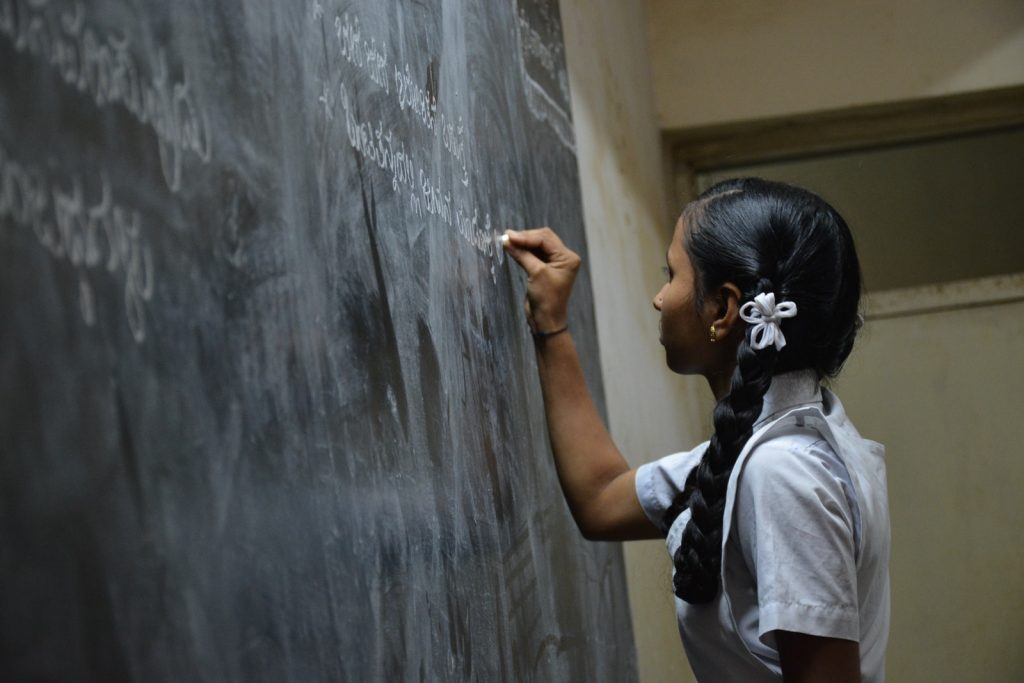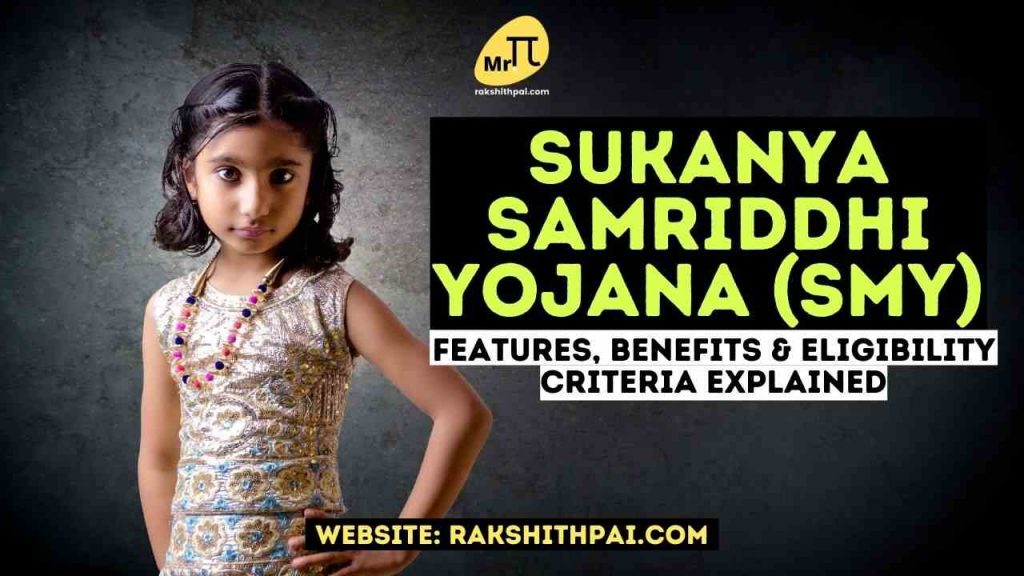Table of Contents
What is a Sukanya Samriddhi Account?
Sukanya Samriddhi Yojana is a scheme that aims to improve the lives of girl children in the country. Sukanya Samriddhi was developed to provide a savings option for every family’s girl child. SSY is valid for 21 years from the date of account establishment or until the girl reaches the age of 18 or marries, whichever is earlier.
Designed to benefit the girl child by providing financial assistance for significant life milestones such as schooling and marriage. On 02/12/2014, the Sukanya Samriddhi Yojana was inaugurated as part of the Beti Bachao Beti Padhao initiative. The Sukanya Samriddhi Account pays a competitive interest rate of 7.6% per annum and includes tax deduction under Section 80C amounting to Rs. 1,50,000 per annum.
How does Sukanya Samriddhi Account works?
Under the Sukanya Samriddhi Yojana, the Parent or the Guardian of the girl child can open an account in the name of the child and deposit Rs. 250 per annum (minimum) up to Rs.1,50,000. The said deposit is eligible for tax deduction up to Rs 1.5 lakh under section 80C.
The Sukanya Samriddhi Account need to be opened in the name of a girl child within the age of 10. And, withdrawal from the said account can be made by the girl upon attaining 18 years of age.
If not withdrawn, the Sukanya Samriddhi Account will be permanently closed by the time the girl reaches 21 years of age. The amount from the Sukanya Samriddhi Yojana will be transferred to the girl’s bank account.
Sukanya Samriddhi Account Tax Implications:
The Sukanya Samriddhi Yojana is a scheme to specifically benefit the girl child in the nation and to safeguard the future of the child. Keeping this in mind, the Central government has provided the SSY scheme with optimum benefits.
Under the scheme, any investments made in an accounting year can be fully claimed and deducted up to a limit of Rs. 1,50,000. The said limit is applicable under section 80C.
Furthermore, Interest in the scheme which is amongst the highest is also exempt from tax. And, upon maturity, the entire amount deposited under the Sukanya Samriddhi Account is completely exempt from tax.
What are the benefits of the Sukanya Samriddhi Account?
The following are the benefits of opening a Sukanya Samriddhi Account;
High Interest
Under the Sukanya Samriddhi Account, Depositor gets an interest rate as high as 7% to over 9% per annum. Since the scheme is specifically designed to benefit a girl child, the said interest rates will not ever come as low as a Fixed Deposit scheme. Thus, depositors (the girl child) can benefit from higher interest income until the age of 21.
Tax Benefits
The Sukanya Samriddhi Account offers tax deduction to the depositor up to the limit of Rs. 1,50,000 per annum. The said limit is exempt & claimable under section 80C.
Also, as said earlier, both the interest on the SSY scheme and the amount at the maturity is completely exempt from tax. Thus, from a tax perspective, the SSY scheme can be called one of the best investments to own.
Security
It is a known fact that women all around the world need to take extra caution when it comes to wealth and retirements plans. Although the Sukanya Samriddhi Yojana doesn’t provide retirement benefits, Sukanya Samriddhi Yojana surely provides the girl child with some kind of security.
Accessible
The Sukanya Samriddhi Account is accessible to each and every child (girl) in India. The account can be opened in any post office or authorized branches of commercial banks. And with the help of net banking, Indians can open SSY accounts online.
Premature withdrawal
A girl child with Sukanya Samriddhi Account can close her account by the age of 21. But, she can make a withdrawal before the maturity of the fund thus making the funds accessible at times of need.
Minimum contribution
The minimum contribution to be made under the Sukanya Samriddhi Account is set at Rs. 250 per annum. If the said limit is not paid in any financial year, Rs.50 penalty is liable.
Such minimum contribution requirements help lower-income families & seasonal working-class families in India to maintain their contribution whilst not affecting their basic needs-based consumption.

Who is eligible for Sukanya Samriddhi Account?
Every Indian girl child can open the Sukanya Samriddhi Account anytime after birth. But, before the child reaches 10 years of age. The account can be opened in the child’s name by the parents or Guardian.
It is important to note that, a family with two girl children can both subscribe to the Sukanya Samriddhi Yojana and avail benefits of the scheme. But, as per the rule, the limit is set to two children, no more.
What are the rules for opening Sukanya Samriddhi Account?
In order to subscribe to the Sukanya Samriddhi Account, the following documents must be provided.
- SSY Account opening form (CLICK HERE! To download the form).
- Beneficiary’s birth certificate.
- Address proof of the Parents or the Guardian of the beneficiary.
- Id proof of the Parents or the Guardian of the beneficiary.
- Details of other KYC documents will be asked. (Eg: Aadhar, PAN, etc)
How many years need to pay for Sukanya Samriddhi Yojana?
If the Parent or the Guardian of the child subscribes to the Sukanya Samriddhi Account as soon as the child is born, the contribution for the same needs to be made in the account till the completion of a period of fifteen years from the date of opening of the account.
Post the 15th year of contribution, no further contribution is required and upon maturity, the girl child will get a lumpsum amount tax-free along with accumulated interest.
How much I will get in Sukanya Samriddhi Yojana?
Let’s take two scenarios. Both Mr.X & Mr.Y make their contribution for 15 years and let the account run till the end of maturity (I.e, till the girl child reaches 21 years of age)
Mr. X and his daughter Ms. A and Mr. Y with his daughter Ms. B
Both Mr. X and Mr. Y have made contributions for the complete 15 years in their daughter’s (single child) name. But, Mr.X has made Rs. 1,50,000 contribution per annum into Ms. A’s account wherein Mr.Y has made Rs. 30,000 per annum into Ms. B’s account
After 15 years, Mr.Xs daughter Ms. A will have Rs. 63,65,000 accumulated.
And, Mr. Ys daughter Ms. B will have Rs. 12,73,000 accumulated.
Since the Sukanya Samriddhi Yojana offers high-interest rates and around 15 years of time to accumulate, the power of compounding is noted.
Premature closure of Sukanya Samriddhi Account
In the event of the account holder’s death, the account will be promptly closed upon presentation of a death certificate issued by the appropriate authorities, and the account balance, along with any interest accrued to the date of death, will be given to the account holder’s parent or guardian.
During the time between when the account was opened and when it was closed, interest will be calculated at a rate similar to that of a post office savings account.
Premature account closure may be permitted in exceptional circumstances, such as medical support for a female child with life-threatening conditions or the death of the parent or guardian.
If the operation or continuation of the account would cause excessive hardship to the account holder (girl child), this is permitted if the account has been open for five years. Premature account closure will be permitted upon receipt of all required documentation. The account holder, the parent, or the guardian, will get the money that hasn’t been paid yet, with the right interest.
Withdraw from the Sukanya Samriddhi Account for Education expenses:
As soon as the girl reaches the maturity age of 21, the Sukanya Samriddhi Account is automatically closed and the person will receive the full amount along with interest accumulated so far.
In certain cases, premature withdrawal is allowed. Such as, to cover the account holder’s financial obligations related to higher education, withdrawals of up to 50% of the account’s credit amount at the end of the prior fiscal year are permitted. Even though the account holder can’t make withdrawals until they reach the age of 18 or finish high school, whichever comes first.
Not only is a written application necessary for this, but also documented proof in the form of a verified admission offer from an educational institution or a fee slip from such a school confirming the financial necessity is required. (Withdrawal is limited to the number of fees and other charges that were due when the child first started school, as stated in her admission letter or on the fee slip from her school.)
The withdrawal can be made in one lump sum or in installments of no more than once per year for a maximum of five years, subject to the educational institution’s confirmation of the maximum amount.
Withdraw from the Sukanya Samriddhi Account upon Maturity:
The account will automatically mature as soon as the child reaches 21 years of age. Maturity of an account may be granted prior to the age of 21 if the account holder requests it due to marriage.
The account holder, i.e., the female child, will be asked to provide a statement on non-judicial stamp paper, confirmed by a notary and accompanied by evidence of age stating that she will be at least 18 years old on the day of marriage. No such closure shall be permitted one month before or after the wedding day.
(Please note that the legal age for marriage of the girl child has been raised to 21 years from the previous limit of 18 years. Have not noted any amendments in this regard in the SSY scheme. If noted, will update).
SSY Scheme for a Non-Resident Indian (girl child):
A female child is eligible for an SSY account only if she is an Indian resident at the time the account is created and continues to be so until the account matures or is closed.
Non-resident Indians are not eligible to open SSY accounts. Indeed, if you or your child’s residence status changes to non-resident or she acquires citizenship of another country during the period of the plan, no interest is payable from the date of citizenship or residential status changes, and the account is regarded closed.
What if the guardian dies in Sukanya Samriddhi Yojana?
Upon the untimely death of the guardian, the account holder (girl child) with the help of other family members needs to assign another major individual to be the guardian until the child reaches 18 years of age.
Change of Guardian:
With regards to changing guardianship, you may create a new account as a guardian on behalf of a beneficiary who has not reached the age of ten years as of the date of account opening.
When an Account is opened, the guardian is given a passbook that contains the Account holder’s name, address, and date of birth, the date the account was opened, the account number, the guardian’s name, and address, their connection with the Account holder, and the amount deposited.
Conclusion:
The Sukanya Samriddhi Yojana, or SSY account, is a modest deposit plan for female children sponsored by the government of India. The SSY account may be started at any time after the female child is born and until she reaches the age of ten. You may open an SSY account at any post office or commercial bank branch. With a minimal initial payment of Rs 250, you can start a Sukanya Samriddhi Yojana account.
The maximum amount that may be deposited in the SSY account every financial year is Rs 1.5 lakh. The SSY account is established in the name of a female kid in order to provide her with a good future. The funds may be used for further education or to cover the cost of a female child’s marriage. The SSY account is valid for 21 years from the date of opening, or until the female child attains the age of 18 and marries.
You may make partial withdrawals of up to 50% of the sum towards the female child’s higher education expenses. The SSY account currently offers an annual interest rate of 7% to over 9% per annum. Under Section 80C of the Income Tax Act, the cash placed in the SSY account is eligible for a tax deduction of up to Rs 1.5 lakh each year. The interest earned on the deposit and the maturity amount is tax-free.
FAQs:
For More Information, Watch This Video:
Disclaimer: All the information on this website is published in good faith and for general information purposes only.









